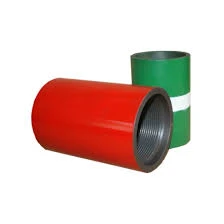- Afrikaans
- Albanian
- Amharic
- Arabic
- Armenian
- Azerbaijani
- Basque
- Belarusian
- Bengali
- Bosnian
- Bulgarian
- Catalan
- Cebuano
- Corsican
- Croatian
- Czech
- Danish
- Dutch
- English
- Esperanto
- Estonian
- Finnish
- French
- Frisian
- Galician
- Georgian
- German
- Greek
- Gujarati
- Haitian Creole
- hausa
- hawaiian
- Hebrew
- Hindi
- Miao
- Hungarian
- Icelandic
- igbo
- Indonesian
- irish
- Italian
- Japanese
- Javanese
- Kannada
- kazakh
- Khmer
- Rwandese
- Korean
- Kurdish
- Kyrgyz
- Lao
- Latin
- Latvian
- Lithuanian
- Luxembourgish
- Macedonian
- Malgashi
- Malay
- Malayalam
- Maltese
- Maori
- Marathi
- Mongolian
- Myanmar
- Nepali
- Norwegian
- Norwegian
- Occitan
- Pashto
- Persian
- Polish
- Portuguese
- Punjabi
- Romanian
- Russian
- Samoan
- Scottish Gaelic
- Serbian
- Sesotho
- Shona
- Sindhi
- Sinhala
- Slovak
- Slovenian
- Somali
- Spanish
- Sundanese
- Swahili
- Swedish
- Tagalog
- Tajik
- Tamil
- Tatar
- Telugu
- Thai
- Turkish
- Turkmen
- Ukrainian
- Urdu
- Uighur
- Uzbek
- Vietnamese
- Welsh
- Bantu
- Yiddish
- Yoruba
- Zulu
Understanding the Distinctions Between Casing and Tubing in Oil and Gas Operations
Understanding the Difference Between Casing and Tubing in Oil and Gas Production
In the world of oil and gas extraction, two critical components used in the drilling process are casing and tubing. Both serve essential functions, yet they are fundamentally different in their roles, construction, and applications. Understanding the distinctions between casing and tubing is vital for anyone involved in the petroleum industry, from engineers to investors.
What is Casing?
Casing is a series of steel pipes that are inserted into a newly drilled borehole to provide structural integrity and isolate the wellbore from surrounding rock formations. The primary purpose of casing is to prevent the collapse of the well and to protect groundwater sources from contamination by hydrocarbons and drilling fluids. Casing is typically classified into different types, including surface casing, intermediate casing, and production casing, each serving specific purposes at varying depths of the well.
1. Surface Casing This is the first layer of casing and is installed to protect the wellbore from shallow, unstable formations and to isolate freshwater zones. It is usually set at a shallow depth. 2. Intermediate Casing This type of casing is installed in situations where additional support is needed due to geological challenges. It helps to handle complexities like pressure changes and unstable formations during the drilling process. 3. Production Casing Installed after the completion of the drilling phase, this casing allows for the extraction of oil and gas. It seals the wellbore and provides the final barrier against the escape of fluids.
Casing is cemented in place to ensure stability and isolation. The cement also helps to bond the casing to the surrounding rock, further enhancing the structural integrity of the well.
What is Tubing?
Tubing, on the other hand, is the inner pipe that allows the extracted oil or gas to flow to the surface. It is a smaller diameter pipe that is installed inside the production casing and serves as the conduit for the hydrocarbons extracted from the well. Unlike casing, tubing is designed to handle the pressure and flow rates of production fluids and is more flexible to accommodate changes in pressure.
what is the difference between casing and tubing?

The installation of tubing occurs after the well has been completed, and it is essential for efficient production
. Tubing can be retrieved and replaced more easily than casing, allowing for maintenance or upgrades as production conditions change.Key Differences Between Casing and Tubing
1. Purpose The primary purpose of casing is structural integrity and isolation, while tubing’s main function is to transport the extracted oil and gas to the surface.
2. Placement Casing runs along the entire length of the wellbore, whereas tubing is installed within the casing, typically in the production zone.
3. Material and Size Casing is made from thicker steel to endure external pressures, while tubing is thinner and designed for internal fluid flow.
4. Maintenance Tubing is more easily replaceable, which is important for ongoing production operations, while casing is generally intended to remain in place throughout the life of the well.
Conclusion
In summary, both casing and tubing play vital roles in oil and gas operations, each with distinct functions and characteristics. Casing provides the necessary structural support and protection for the wellbore, while tubing serves as the critical conduit for hydrocarbon production. Understanding the differences between these two components is essential for effective well construction, maintenance, and overall resource management in the petroleum industry.
-
Tubing Pup Joints: Essential Components for Oil and Gas OperationsNewsJul.10,2025
-
Pup Joints: Essential Components for Reliable Drilling OperationsNewsJul.10,2025
-
Pipe Couplings: Connecting Your World EfficientlyNewsJul.10,2025
-
Mastering Oilfield Operations with Quality Tubing and CasingNewsJul.10,2025
-
High-Quality Casing Couplings for Every NeedNewsJul.10,2025
-
Boost Your Drilling Efficiency with Premium Crossover Tools & Seating NipplesNewsJul.10,2025







